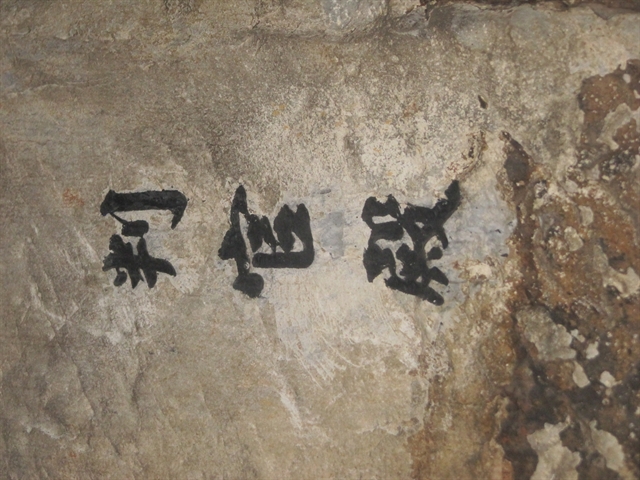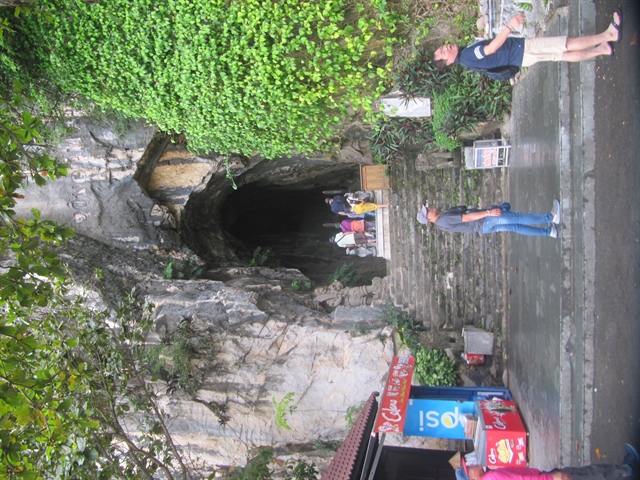 Life & Style
Life & Style


|
| The certificate of Memory of the World Committee for Asia and the Pacific for Hán Nôm character steles is presented to representatives of Đà Nẵng at the Ninth General Meeting UNESCO Memory of the World Regional Committee for Asia and the Pacific (MOWCAP) in Andong, South Korea. Photo courtesy of Đà Nẵng Museum |
ĐÀ NẴNG — Two heritage pieces of Viêt Nam were recognised as part of documentary heritage in Asia and the Pacific at the 9th general meeting of the Memory of the World Committee for Asia and the Pacific (MOWCAP) in Andong city, the Republic of Korea.
They are the Ma Nhai (Inscriptions) in ancient Nôm and Hán Chinese characters on the Marble Mountains in Đà Nẵng, and Hán-Nôm character documents (1689-1943) in Trường Lưu village of Hà Tĩnh Province.
The two documentary heritages of Việt Nam are among 12 documents inscribed in the Asia-Pacific Documentary Heritage List, along with one from each of Singapore, Indonesia, Iran, South Korea and China.
It's also the first UNESCO-recognised world heritage of Đà Nẵng – a tourism hub near the world heritage site of Hội An ancient town, former director of Đà Nẵng's Chăm Sculpture Museum Võ Văn Thắng said told Việt Nam News.
The inscriptions, including 78 Ma Nhai steles (76 steles in Chinese and two in Nôm), were carved on cliffs and caves at the famous Marble Mountains in Ngũ Hành Sơn District of Đà Nẵng from the first half of the 17th century to the 1960s of the 20th century, according to Đà Nẵng Museum.
These steles were unique forms with many genres such as pen, inscription, canopy, poetry, title, a couplet of the kings, mandarins of the Nguyễn Dynasty, senior monks, and generations of people and visitors.
It said the oldest stele was recorded in Hoa Nghiêm Cave in 1640, and the latest was from 1955.

|
| Hán (Chinese) characters carved on cliff at a cave in Ngũ Hành Sơn (Marble Mountains) in Đà Nẵng. Hán Nôm character steles in caves and pagodas at the site was recognised as the world documentary heritage by UNESCO. VNS Photo Công Thành |
The Marble Mountains was given the name Ngũ Hành Sơn, or Non Nước, by King Minh Mạng under the Nguyễn Dynasty in 1837.
There are also many beautiful caves and ancient temples in the Marble Mountains, and King Minh Mạng named all the mountains, caves and pagodas.
Following the MOWCAP, the steles store the memories of the economic, cultural and social contacts that stretched from Việt Nam through Asia to the global maritime trade route in the past centuries.

|
| Tourists visit a cave in Ngũ Hành Sơn (Marble Mountains) in Đà Nẵng. The site is an attraction to tourists for landscape and history. VNS Photo Công Thành |
Up to date, Việt Nam has had nine documentary heritages registered by UNESCO, including woodblocks of the Nguyễn Dynasty (1802–1945).
The rest are Vĩnh Nghiêm Pagoda in Bắc Giang Province; 'Hoàng Hoa Sứ' Trình Đồ (an ancient book on the Việt Nam-China diplomatic activities in the 18th century); the Nine Dynastic Urns, built-in 1835-1837; the woodblocks used to print books of Hán (Chinese) characters, or adapted Chinese characters, and the imperial records and literature on the royal architecture in Huế Imperial monuments and collection of 82 stone steles at the Văn Miếu (Temple of Literature) in Hà Nội. — VNS




